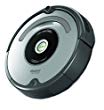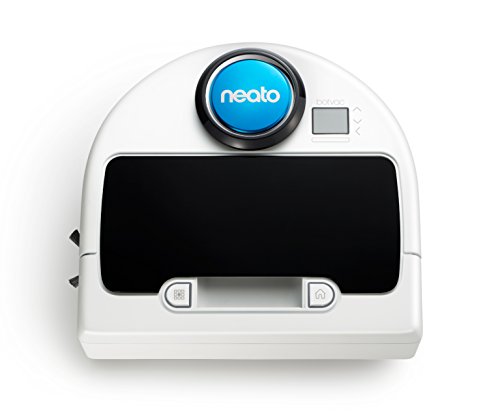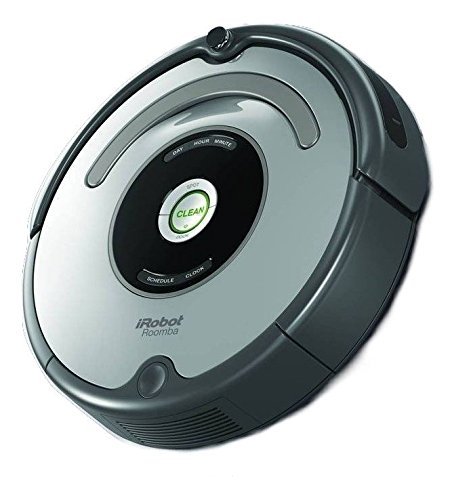Robot vacuums are one of the easiest ways to save time while actually getting a cleaner home. The most important thing is to pick the right one. Consider your needs while you compare the Neato D75 vs Roomba 650.
When you get home after a long day, the last thing you want to do is grab your broom or vacuum and start cleaning. However, it can be hard to relax if your floors are a mess.

What if you could come home and your floors be cleaner than they were when you left? This is possible when you have the right robot vacuum cleaner.
These vacuums will move around your home when you are gone, tackling the mess and helping to prevent further mess from things like pet fur. All you have to do is schedule the vacuum and it will go to work when it is supposed to.
There are numerous options, including the Neato D75 vs Roomba 650. Evaluating both of these robot vacuums will help you to see which one will help you with the floors in your home as efficiently as possible.
Quick Comparison: Neato D75 vs Roomba 650
| Features | Run-Time | WiFi | Filter | Battery | Weight |
|---|---|---|---|---|---|
| #1. Roomba 650 Our Best Pick  Check Price | Up to 90 Minutes | Yes | HEPA | Lithium Ion | 7.9 Pounds |
#2. Neato D75 Check Price | 60 Minutes | Yes | High Efficiency | Nickel Metal Hydride | Nine Pounds |
Charging and Battery
The Roomba 650 will work for up to 90 minutes when the battery is fully charged. However, if your home has a lot of walls and obstacles, you may only get about 60 minutes of run-time out of each battery charge.
The Neato D75 gets an average of 60 minutes of run-time out of every full battery. Obstacles do not appear to affect its battery life as much as the Roomba.

The Roomba has a lithium ion battery and the Neato has a nickel metal hydride battery. While both of these batteries recharge in about two to three hours, the lithium battery tends to last slightly longer.

Both of these vacuums are able to recharge themselves. When they are working, if the battery drains to a certain level, the devices will head back to their charging station to recharge.
The Roomba has a host of sensors that allow it to move around your home with ease. It is able to detect areas that need extra cleaning. The vacuum knows when there is a drop-off and an obstacle so that it can change course to avoid them.

The Neato uses LaserSmart Mapping and Navigation. As it is moving around your home, it is able to map and scan the space, allowing it to clean in a methodical and strategic manner. With this type of navigation, it does not leave any spot on your floors uncleaned.
Brushes and Cleaning
The Roomba has a three-stage cleaning process. The multi-surface brushes work on all floor types to agitate debris, lift them from your floor and then suck them into the dust bin. It has a side brush to clean along obstacles and walls.

The Neato features a spiral blade brush that is capable of heavy-duty cleaning on all floor types. While the vacuum moves around your space, it hugs obstacles and walls so that it removes all traces of dirt with its edge cleaning side brush.

The Roomba has a HEPA filter. This is a superior filter because it is able to trap microscopic particles. Because of this, once your vacuum picks up debris, they stay inside the vacuum to clean your floors and your home’s air simultaneously.

The Neato has a high-efficiency filter. While not as effective as a HEPA filter, it is able to keep most debris in the vacuum so that dirt is not released back out into your home when it is done vacuuming.
Maintenance
There are dust bins in these robot vacuums. Both of them function the same, so the overall maintenance needs are the same.
On days where you use your Roomba or Neato, you should check the dust bins once they are done cleaning.

These bins pull out, allowing you to dump them quickly and slide them back into the dust bin compartment. This maintenance is equally simple for both of these robot vacuums.
Pros and Cons
The Neato D75 vs Roomba 650 have a lot in common. However, to help differentiate them, one of the best places to start is by exploring the pros and cons of each of the vacuums.
Roomba 650 Pros
- It navigates around the home efficiently
- This vacuum is ideal for pet hair
- It is just as effective on hard floors as it is on carpeting
Roomba 650 Cons
- With long-term use, it may start taking longer for the battery to recharge
Neato D75 Pros
- The dust bin can hold a lot of debris
- It has strong suction
- This vacuum’s battery recharges quickly
Neato D75 Cons
- It may get stuck in areas with thick carpeting
Conclusion
Now you can see what the Neato D75 vs Roomba 650 are really about. It is time for you to choose which of these devices best meet your needs. While both have their advantages, the Roomba 650 is the better choice.

The Roomba 650 uses a lithium ion battery which allows for a longer run-time, and the life of this battery type is typically longer than other rechargeable batteries. It has superior navigation technology and a HEPA filter that is able to trap the smallest of particles, ensuring your home’s floors and air are cleaner.
Check out other comparison reviews below:

